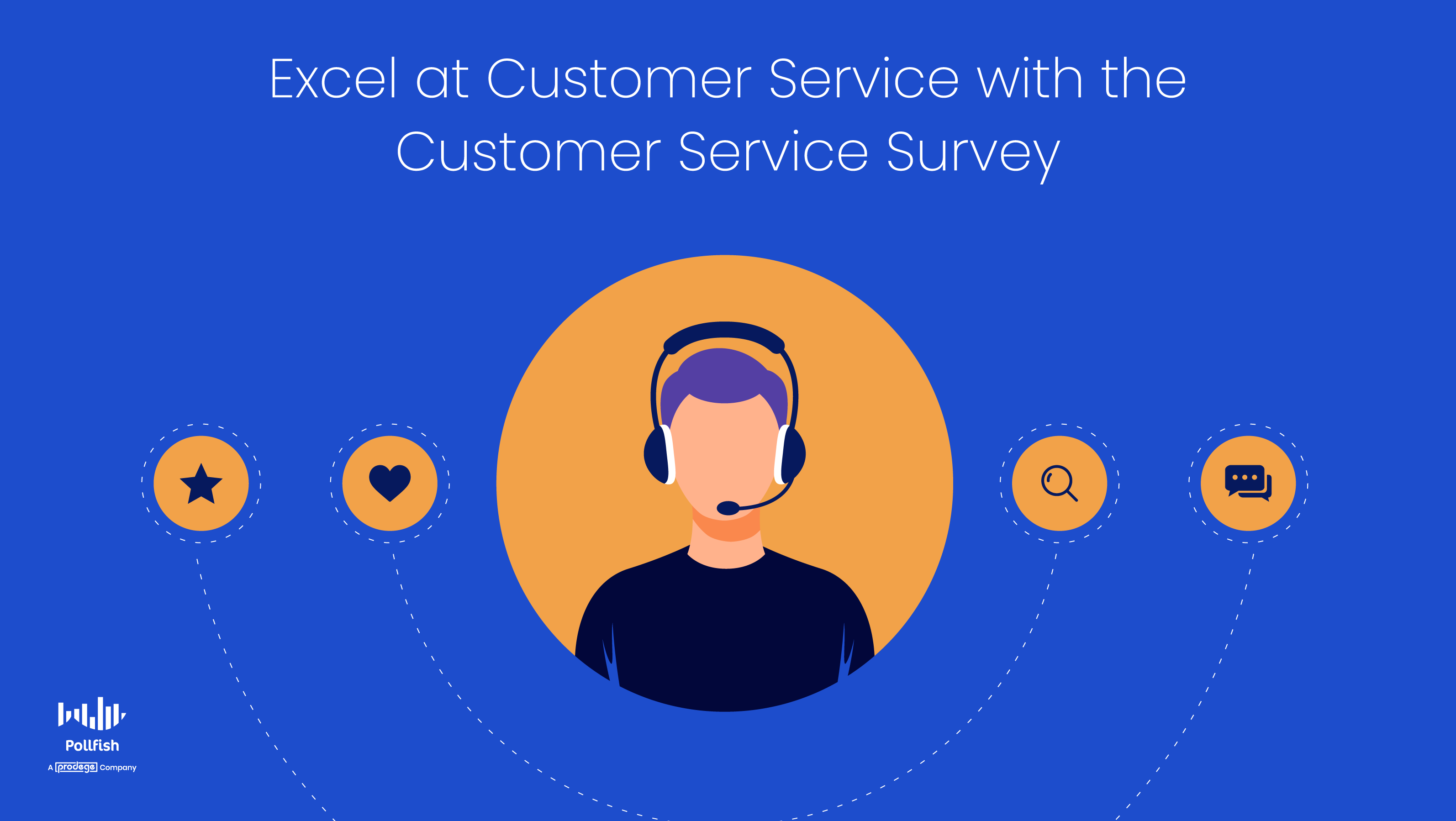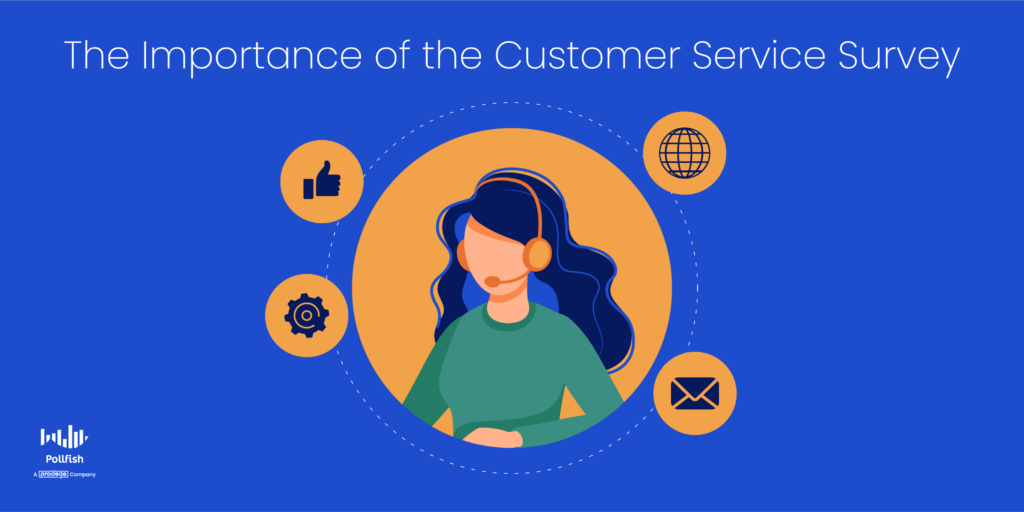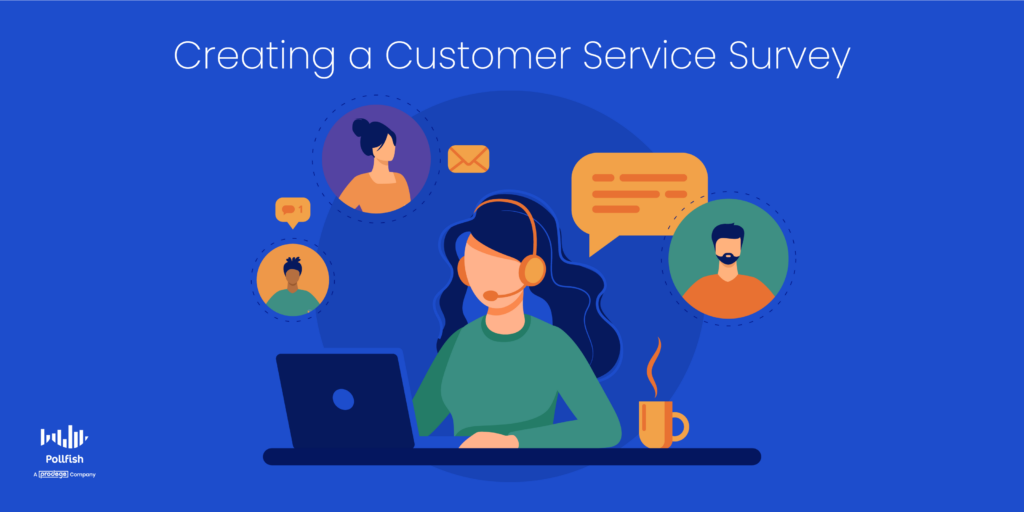Diving Into the Customer Service Survey to Meet All Customer Service Demands

All businesses must conduct a customer service survey from time to time to ensure their consumers are satisfied with their service and all of its associations.
This is because few other things contribute to the success of your business as much as your customer service.
In fact, 90% of Americans use customer service as a factor to decide whether or not to do business with a company. As such, for the vast majority of American consumers, customer service is a make-or-break aspect that can mean patronizing your company or going to your competitor.
Customers have high expectations when it comes to customer service, as they expect to receive customer service from any channel and device. However, 60% of customers don’t see customer service as becoming easier, as 86% of customers have had to contact customer service multiple times for the same reason.
This signifies that brands don’t take care of customer needs, even when they are told upfront through a Voice of Customer (VoC) program.
This article delves into the customer service survey, its importance, when to use it, how to create one and more.
Understanding the Customer Service Survey
As its name suggests, the customer service survey is a kind of consumer survey that deals with the specific matters, concerns, interests, considerations and other feedback that customers have in regards to the customer service of your organization.
Dealing specifically with the customer service aspect of their customer buying journey, this survey provides your customers with an avenue to express their opinions on all things relating to your customer service.
Customer service refers to the support you offer your customers both before and after they buy and use your products or services. Providing customer service ensures that your customers have an easy and enjoyable customer experience with you.
This is of utmost importance because CX is a combination of all the opinions and experiences customers have and associate with your brand. It can mean the difference between them casting aspersions on your brand, thus going to competitors, or enjoying it, raising their consumer loyalty and Customer Lifetime Value.
To improve your customer service and your overall customer experience, you should use the customer experience survey, as it provides various means for understanding your customer service.
As such, the following lists all the functions and abilities that this kind of customer survey provides for your business:
- To rate your customers’ satisfaction with your customer service
- To explain their grievances
- To file complaints
- To express what they liked
- To give suggestions for improvement and more
- To give insight into their consumer preferences as they relate to your service
- To relay their chosen mode of providing feedback
- To discover gaps in the service
- To help customers achieve a certain goal
- To understand your customers’ own questions about your service
The Importance of Customer Service Survey
The customer service survey is important for a variety of reasons, all of which contribute to the success of your business, whether it is with a particular customer segment, for a certain campaign or otherwise.
Firstly, offering good customer service is an important factor for retaining customers and customer retention is more cost-effective than customer retention. This is because it costs five times more to acquire a new customer than it does to keep an existing one.
Additionally, the success rate of selling to current customers is 60-70%, while only 5-10% when selling to new customers. When you deliver consistently good customer service, you’ll be able to build consumer loyalty and retain customers. The longer you keep your customers, the longer you’ll benefit from customer retention.

Moreover, in today’s competitive marketplace, customer service involves far more than merely a telephone support agent. Customers get support via various channels, such as email, chat, text message, social media, in-person and more.
It is imperative that brands adapt to these customer service methods. In doing so, they’ll need to understand exactly what bothers and satisfies their customers as they receive this service in an omnichannel setting.
This kind of survey is also important to use in self-service scenarios, as many companies provide self-service support for their customers. This method allows customers to access customer support at any time convenient to them, rather than only during business hours.
The customer service survey is also useful, as it provides flexibility. It is apt to send this survey before, during and after a customer receives some sort of customer service. Doing so will grant you complete insight into what customers are experiencing and how they perceive all the customer service your employees provide.
While you may consider your employees to be well-trained and adept at providing customer service, your customers may think otherwise, at least at certain points. Thus, the customer service survey provides you with a clear view of customers’ experience with your customer service when you aren’t there to see or hear it — which is impossible to do all the time, even if your company is small.
Lastly, the customer service survey is a critical tool for improving your brand image and reputation. As such, it can help you augment your brand equity, which is the value your business derives from being recognizable. Most importantly, by surveying customers on their customer service, you’re showing them you care and are open to making adjustments to best serve them.
Utilamely, the customer service survey allows you to carry out these improvements, enabling you to increase your brand trust. This is a crucial concept to maintain for your brand, as high levels of trust spur customer retention and interest in your brand, thereby fostering customer acquisition as well.
When you lure new customers with minimal effort, you’ll also be lowering your customer acquisition cost.
When to Use a Customer Service Survey
As mentioned above, you can deploy a customer service survey at various times, not just after customers received customer service.
In fact, when you distribute surveys before your customers receive any customer support, you’ll know their expectations beforehand, arming you with the knowledge of how to serve them during any support session.
The following provides examples of when you should use the customer service survey:
- After your customers bought from you, whether it is in-store or digitally.
- In this example, you inquire into whether or not they asked or received any help from your employees.
- This will let you know whether your employees asked customers if they need help or if they hadn’t, what stopped the customers from asking for help themselves.
- Before your customers head into your store.
- Whether they chat with your company on the phone or via a chat, make sure to send them a survey prior to their arrival at your store.
- Simply ask them first and then send them the link to your survey.
- This also applies if they received customer service before continuing their online customer journey.
- As your customers are speaking with you.
- You can preface your customer service session by mentioning the survey and asking for their consent.
- You can also mention survey incentives if you offer them to raise your survey completion rates.
- When you scheduled a support session, but customers missed it or opted out.
- Send a survey to understand why they missed the scheduled customer service session.
- If the customers opted out beforehand, send a survey to find out why and what would have made them keep their appointment.
- After a customer complains and before they receive customer service to help resolve their issue.
- This involves times of dissatisfaction, whether it’s with a product, service or experience.
- Send the survey after the customers complain, but before you serve them with follow-up service.
- This way, you’ll know the issue and how to go about providing the best customer service to resolve it.
How to Create a Customer Service Survey
There are many approaches you can take with your customer service survey, as laid out above. If you’re still not sure how to go about creating one or need a few pointers, the following will help you.
The following steps guide you on how to create a customer service survey. Check out how to create customer service survey questions.

- Define the goal of your survey.
- Refer to the above section to help you decide what to accomplish with your customer service survey.
- Decide on the correct online survey platform.
- There are a host of online survey tools but they don’t all offer the same capabilities and speed to insights as does Pollfish.
- In the screener section of the survey, select the demographics, location and other traits with which you’re going to qualify who gets to take the survey.
- Use screening questions to select respondents even more granularly, as only those who answer in the way you choose will take the survey.
- Come up with a few key preliminary questions for the questionnaire portion and guide the direction of your survey.
- Choose the survey type you need for your campaign.
- In the questionnaire section, add in your preliminary questions. Choose from a multitude of types of survey questions.
- Use advanced skip logic to route respondents to relevant follow-up questions based on their answers.
- With skip logic, you can ask a quantitative question using multiple choice and follow-up with a qualitative, open-ended question.
- Decide who to send your survey to. This may at times include a broad study with all customers on a mailing list or specific customers who will receive or already experienced a customer service interaction.
- If you’re deploying your survey to a mass network via your online survey platform, decide whether to use your brand name logo and other indicators.
- Always make the survey unique to your brand if you send it to specific people instead of mass-sending it as in Step A.
- Write an effective email invitation if you’re sending your survey to specific customers via email.
- Mention the importance of the survey and that you value your customers’ time.
- You can include incentives.
- Include a call to action (CTA) to an online survey, such as one that exists on a landing page, or post-checkout.
- Be sure it stands out to your respondents.
- Thank your customers for taking your survey with follow-up emails and a “Thank You” on the final page of your online survey.
- Analyze your survey and use it to make changes and key customer service decisions.
Satisfying All Your Customers
Brands should always work towards delighting their customers with amazing customer service. Your customer service is a reflection of how your company treats its customers. No matter the values associated with your brand, if you provide poor customer service, customers will always go elsewhere.
To create an insightful customer service survey study, opt for the proper online survey platform.
Such a platform should run on random device engagement (RDE) sampling, enabling you to reach customers in their natural digital environments, instead of being pre-recruited. This removes social pressures and will cut back on biases.
You should also use a mobile-first platform since mobile dominates the digital space.
Most importantly, the survey platform should allow you to survey anyone. As such, you’ll need a platform with a reach to millions of consumers, along with one that offers the Distribution Link feature.
This feature will allow you to send your survey to specific customers, instead of just deploying them across a network.
When you use an online survey platform with all of these capabilities, you’ll be able to collect key customer service data and outperform on future customer service endeavors.
Pollfish Marketing Team
Ready to Try Pollfish?
Create your survey with AI, target high-quality respondents starting at $0.95 per complete, and start getting results in just minutes in real-time. From running a simple product concept survey to managing a constant stream of trackers for dozens of clients in dozens of countries, we’ve got you.
